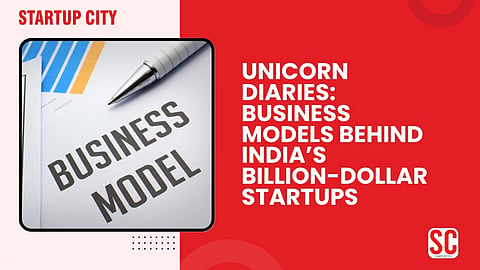

Unicorn Diaries
Imagine this: You’re sitting at your desk, dreaming of building something iconic—something the world notices. You’ve got grit, vision, and ambition. But here’s the big question: How do India’s unicorns actually make their money?
Today, I’m opening up the Unicorn Diaries for you.
Let me walk you through the powerful business models behind India’s billion-dollar startups, with real-world insights that you, as a founder, CEO, or investor, can actually apply.
In startup lingo, a "unicorn" is a privately held company valued at over $1 billion. The term, once coined to emphasize their rarity, is now a benchmark for success—especially in India’s booming startup ecosystem.
India ranks as the third-largest startup ecosystem globally, boasting over 100 unicorns (as per Invest India, 2024). From fintech disruptors to D2C darlings, these startups have cracked the code of scale, sustainability, and strong business models.
But what makes them tick?
In my experience working with young entrepreneurs, I’ve noticed a pattern: the best startups don’t just have great ideas — they have bulletproof business models.
Let’s break down the winning ones behind India’s most admired unicorns.
Example: Zoho, Freshworks (pre-IPO phase)
The freemium model gives users access to a basic product or service for free, while premium features come at a cost.
Builds a massive user base quickly
Encourages product-led growth
Makes the upgrade decision frictionless
Pro Tip: If you’re in SaaS, EdTech, or productivity, this model helps you gain user trust before asking for money.
Example: Flipkart, Zomato, Nykaa
The marketplace model connects buyers with sellers, taking a commission on each transaction.
Scales without inventory risks
Encourages network effects (the more users, the better the value)
Enables diversified revenue streams (ads, logistics, listings)
Thought Starter: Could your startup facilitate transactions or solve inefficiencies in a fragmented sector?
Example: Razorpay, CRED, PhonePe
This model offers value-added financial tools, aggregating services like payments, lending, insurance, or credit management.
Tackles real, everyday pain points
Earns via transaction fees, commissions, or subscriptions
Grows fast due to India’s fintech explosion
Investor Tip: Fintechs with recurring revenue and strong compliance systems are golden.
Example: boAt, Mamaearth, Lenskart
D2C brands bypass traditional retail, selling directly through their websites or e-commerce.
High margin control
Direct relationship with customer data
Better brand storytelling
Here’s the secret: Great D2C brands build community, not just sales.
Example: BYJU’S, Cult.fit, Groww
This model charges customers on a monthly or annual basis for continued access to a product or service.
Offers predictable cash flow
Enhances customer lifetime value (CLTV)
Reduces reliance on seasonal sales
Ask yourself: Can you turn your product into a habit? That’s where subscription shines.
Example: Postman, BrowserStack
These startups provide cloud-based tools or platforms for enterprises, often sold via subscriptions or usage-based pricing.
High-value, sticky clients
Scales globally with low marginal costs
Built-in virality through integrations
If you’re building for businesses, don’t just focus on features. Sell outcomes.
Here’s what I’ve observed across unicorns:
Repeatability: Can the business model be cloned in new cities, segments, or countries?
Clarity of value: Do customers instantly “get” the benefit?
Revenue moat: Is it hard for competitors to undercut your margins?
Total Unicorns (2024): 111
Top Sectors: Fintech, E-commerce, SaaS, Logistics, EdTech
Average Time to Unicorn: ~6.5 years
Top 3 Cities: Bengaluru, Delhi-NCR, Mumbai
(Source: Inc42, Tracxn, and Invest India)
“The market rewards execution, not just ideas.”
— Bhavish Aggarwal, Ola
“Stay obsessed with your user. If you solve for them, everything else follows.”
— Kunal Shah, CRED
“Build something people love before you build something you sell.”
— Sridhar Vembu, Zoho
Which model aligns with your customer’s journey best?
Can you create multiple revenue streams within one model?
How scalable is your unit economics?
Take 5 minutes after reading this article and sketch your model on paper. Seriously, clarity comes when you write it down.
In the end, the business model isn’t just a slide in your pitch deck — it’s your growth engine.
Whether you're building India’s next fintech disruptor or a quiet SaaS powerhouse, the path to a billion-dollar valuation starts with one powerful question:
"How will you create value, deliver it consistently, and capture it sustainably?"
Remember, every unicorn once started where you are now — full of questions, hungry for answers, and brave enough to chase the impossible.
Now go make it happen. 🚀